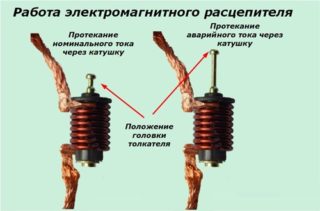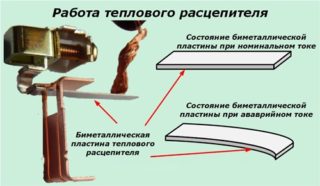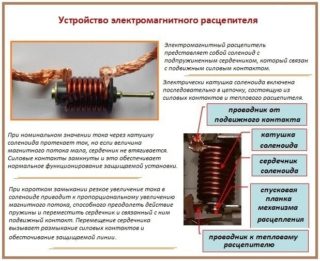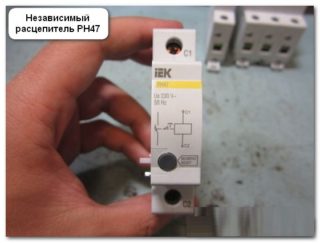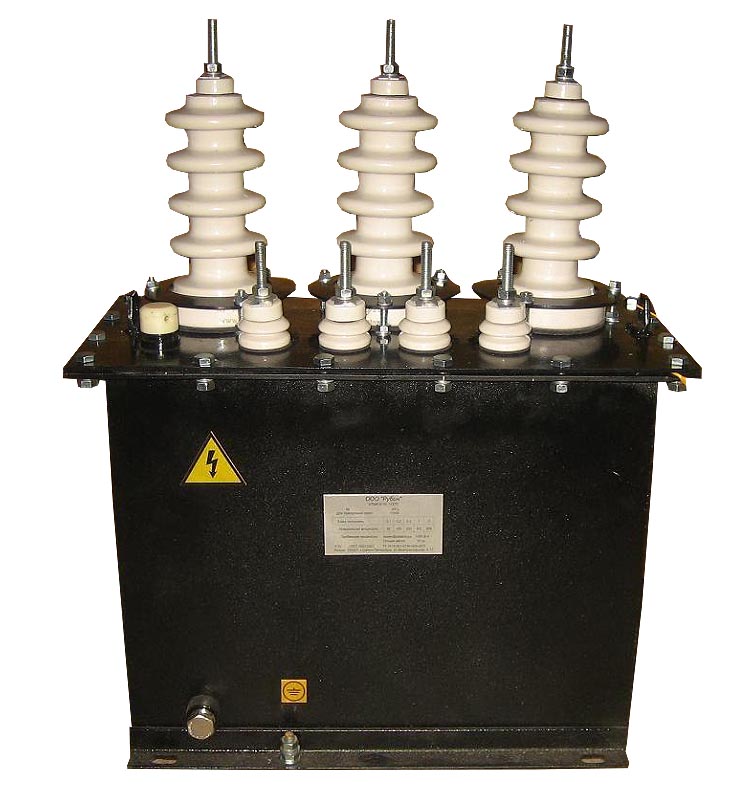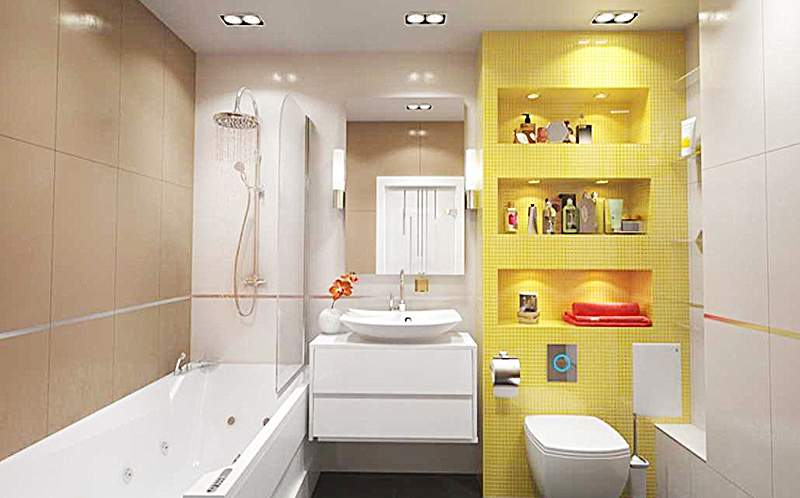No electrical device with a protective function can work normally without a special trigger - a release. It is a special structural element built into the circuit breaker or connected to it by a common electrical circuit. When the machine is triggered, it releases the latch that holds the actuator from switching. Thanks to the action of the voltage (current) release, the circuit breaker is tripped in automatic mode, after which the circuit in which it is installed is completely de-energized.
When e / m and thermal releases are triggered
- in the event of a malfunction of the machine, which ceases to fix the switch;
- with a significant excess of the rated load current;
- with sharp fluctuations in the voltage in the network;
- in the case of a short circuit, leading to the appearance of overcurrents.
Automatic releases also operate in the event of a malfunction of the protected equipment - when current leaks appear in it to the frame or to the ground.
The thermal device has a bimetallic spring, the individual parts of which, when currents of significant magnitude flow through them, are heated with different coefficients of expansion. When one end of the spring heats up, it lengthens slightly less than the other, which causes the element to bend and release the trigger.
The thermal release is installed in the break of the monitored circuit. It protects it from overcurrent and adjusts to preset operating modes.
Device design
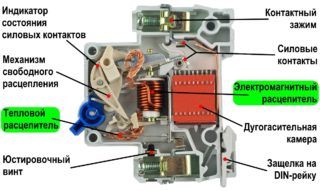
The design and general arrangement of an automatic trip unit primarily depends on its type. The thermal release mechanism is a bimetallic plate that can bend when heated. It is made by mechanically joining (welding) two metal blanks from materials with different coefficients of thermal expansion. In the event of mechanical deformation, one end of it acts on the free release mechanism and causes it to trip.
In contrast, a magnetic device acts on the principle of an electromagnet, which is triggered under certain conditions. Its design includes a special spring that prevents instantaneous opening of the contact. As soon as the current strength reaches a value sufficient to overcome this resistance, the blocking is removed from the actuator. This node opens the operating circuit of the circuit breaker, removing voltage from the load (leaving the consumer without current). Most often, electromagnetic tripping devices are used to protect the supply lines from short circuits.
Types of releases
Overcurrent releases are located directly in the AB case, being their structural element.This type of devices providing the release of the AB actuators is subdivided into the following types:
- thermal release (overcurrent);
- its electromagnetic analogue (for short circuit);
- a combination of these two devices;
- semiconductor or electronic release.
Very often, two or more trip devices are installed in one AB at once.
Automatic circuit breakers with releases of the first two types, built directly into their case, are usually used to protect 380 volt power lines (they are called combined). This type of trip unit is also installed in the supply circuits of asynchronous motors, where the protection is based on a two-stage scheme. When they are started in nominal (permissible) modes, the thermal release is triggered, but the circuit is not completely de-energized. And only when the current reaches the limiting (emergency) value, after the heat, the e / m stage is triggered, finally disconnecting the motor from the three-phase network.
Both thermal and electromagnetic releases are installed in each of the phases of the induction motor power supply and can operate independently of one another.
In addition to purely mechanical release devices, their electronic counterparts are increasingly used in electrical engineering, the principle of which is based on the key properties of their constituent elements. Power transistors are usually used as keys, the semiconductor junction of which is a controlled analog of the trigger. With the help of such a scheme, an executive unit is started (usually a relay or also electronic), which disconnects the emergency circuit.
Trip unit installation procedure
The zero core is laid bypassing the machine with a tripping element, since it is not necessary for their normal operation.
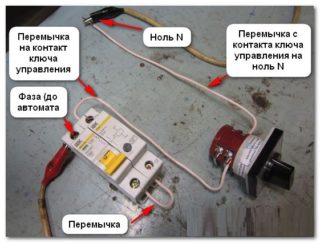
A different picture is observed when installing a circuit breaker with a shunt trip, which is located separately from the main device. In this case, you have to lay additional wiring and switch the device according to the electrical diagram attached to it. During operation, these wires are used to transmit control signals to the executive module.
The machine itself is connected to the power circuit according to a typical scheme, according to which the following options are possible:
- installation of three separate automatic devices (one for each phase);
- installation of a 3-pole three-phase switch (without a zero terminal);
- use of a 4-pole model (with zero contact).
Regardless of the chosen installation method, an automatic machine with a shunt release is connected directly to the controlled circuit, responding to currents flowing through it.
Functional check
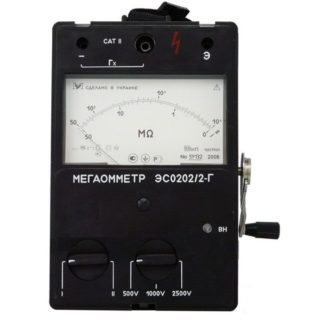
Before starting the technical check of the releases, first of all, an external inspection of the AB is carried out for the presence of chips, cracks and other damages on its body. After that, they proceed to assessing the state of the insulation resistance of current-carrying conductors and connecting wires.
Requirements for the control measurement of this parameter are stipulated in clause 1.8.37.3 of the PUE.
For these purposes, the following types of measuring instruments are suitable, which differ in the ratings of the controlled voltages:
- Megohmmeter under the designation М4100 / 5 (measuring voltage - 2500 Volts).
- ESO202 / 2 device with voltage from 500 to 2500 Volts.
- F4102 / 1-1M meter with the same voltage ratings.
- MIC-2500 device with an operating voltage of 50 to 2500 volts.
Either the M4100 / 5 or the MIC-2500 is the best choice for testing releases from this list. Before starting measurements, you should also provide for a reliable fixation of the disconnected machine on a grounded metal base, and then prepare its poles for inspection. The insulation between each of the AB poles and the "earth" contact is to be measured. According to the requirements of the PUE (clause 1.8.37.3), its resistance for this section cannot be less than 1 MΩ, and in PTEEP this parameter must be maintained at a level of at least 0.5 MΩ.
Even a superficial acquaintance with the known types of circuit breaker releases shows how wide the range of these devices is. Despite the wide variety of names of switching devices, which differ not only in the principle of operation, but also in their design, they all perform the same function. It consists in the timely release of the lock from the machine's actuator.

